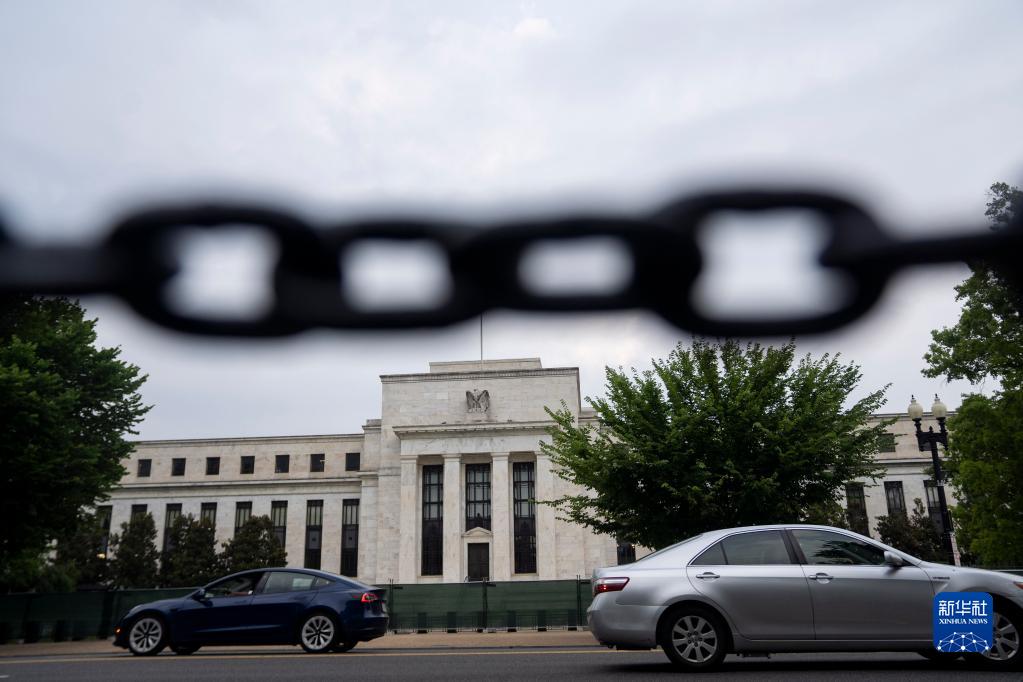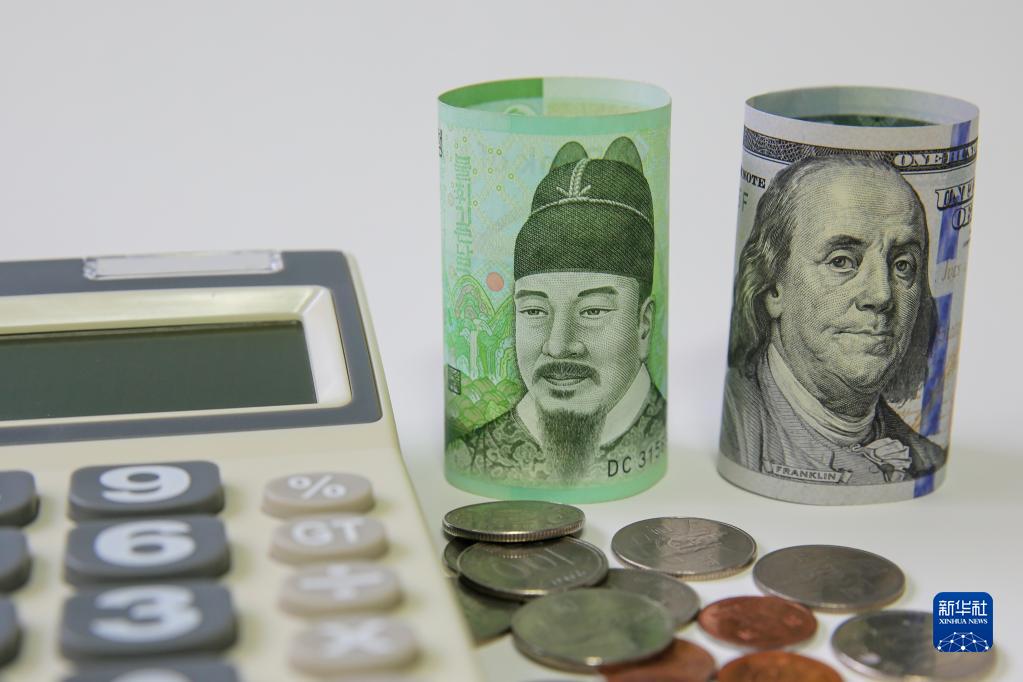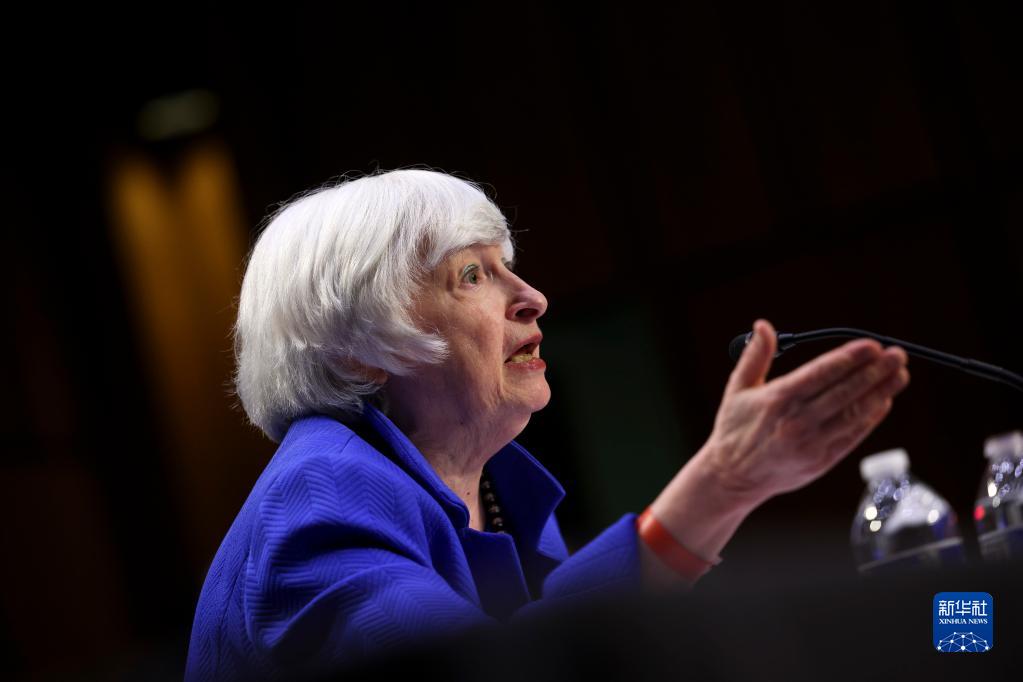A strong dollar leads to a "strong earthquake" in the market. How does dollar hegemony ruin the world?
Xinhua News Agency, Beijing, September 26th(International observation) How does the strong dollar lead to a "strong earthquake" in the market and the hegemony of the dollar ruin the world?
Xinhua News Agency reporter Xu Chao
The US Federal Reserve recently decided to continue to raise interest rates by 75 basis points, pushing the exchange rate of the US dollar against other currencies to continue to rise, which triggered turmoil in the international financial market.
International observers believe that the continued strength of the US dollar, driven by the US monetary policy, is having a devastating impact on a global scale. With monetary policy and exchange rate as important tools, the United States constantly pushed up global inflation and debt levels with the help of dollar hegemony, squeezed the monetary policy space of various countries, and pushed the world economy into recession by driving the global tightening tide.

This is the Federal Reserve Building filmed in Washington, USA on June 22nd. (Photo by Xinhua News Agency reporter Liu Jie)
Affect the exchange rate and push up inflation in other countries.
Since the Federal Reserve started the interest rate hike cycle in March this year, the exchange rate of the US dollar against other currencies has continued to rise, and it accelerated before and after the US interest rate hike node in September.
On September 22, the exchange rate of the Japanese yen against the US dollar once approached the 146-to-1 mark in intraday trading, hitting a new low in 24 years, prompting the Japanese Ministry of Finance to announce its intervention in the foreign exchange market to prevent further depreciation of the Japanese yen. This is the first time that the Japanese government has intervened in the foreign exchange market since June 1998. The yen has depreciated by about 25% against the US dollar this year.
On the same day, the exchange rate of the Korean won against the US dollar fell below the 1400-to-1 mark in intraday trading, setting a record low since March 31, 2009.

This is the Korean won and US dollar bill taken in Seoul, South Korea on September 22nd. (Photo by Xinhua News Agency reporter Wang Yiliang)
According to the US Wall Street Journal, this year, the US dollar index of the Intercontinental Exchange, which measures the exchange rate between the United States and its major trading partners, has risen by 14%, which is the strongest year for the US dollar since the index was launched in 1985. The exchange rates of the euro, the yen and the pound against the US dollar have all fallen to decades lows, and emerging market currencies have also been hit hard.
Analysts believe that the exchange rate "scissors difference" brought by the strength of the US dollar is "harvesting" the world through inflation. No matter developing countries or other developed countries, once the local currency depreciates against the US dollar, the cost of importing commodities denominated in US dollars will inevitably rise, which will aggravate their own inflation. For the United States, it is cheaper to import goods from other countries, and the appreciation of the dollar has thus become one of the means to alleviate domestic inflation.
Take the euro zone as an example. In August, the inflation rate reached 9.1% at an annual rate, far exceeding the European Central Bank’s medium-term inflation target of 2%. In nine of the 19 member countries of the euro zone, the annual inflation rate has reached double digits. After the euro depreciated against the dollar, Europe imported raw materials and semi-finished products denominated in dollars from the United States at higher prices, bearing the inflationary pressure passed on by the United States.
The Wall Street Journal commented: "In terms of curbing inflation, a strong dollar has brought a favorable wind to the United States, but it has put pressure on the rest of the world."
Raising interest rates and deepening economic recession expectations
Under the pressure of increasing inflation and devaluation of local currencies, many countries have to follow the pace of the Federal Reserve and raise interest rates. In the words of Ethan Harris, chief economist of Bank of America, the world is caught in a "interest rate race".
Before and after the Fed’s interest rate hike, the central banks of Sweden, Switzerland, Britain and South Africa all raised interest rates sharply. Among them, the Swiss central bank’s interest rate hike marked the end of the 10-year negative interest rate era in Europe, and Japan became the only major economy that maintained the negative interest rate policy.
Last November, President christine lagarde of the European Central Bank claimed that interest rates in the euro zone were unlikely to increase in 2022. This month, the European Central Bank announced that it would raise interest rates for the second time this year, with a rate of 75 basis points, the largest rate hike since the introduction of the real euro currency in 2002.

This is the Euro sculpture and a fountain sculpture shot in Frankfurt, Germany on September 8th. (Photo by Xinhua News Agency reporter Shan Yiyi)
In Asia, the central banks of the Philippines and Indonesia announced a 50 basis point rate hike on the 22nd, and the central bank of Vietnam announced a 100 basis point rate hike on the 23rd.
Bloomberg statistics show that since the beginning of this year, the central banks of about 90 economies have raised interest rates, and half of them have raised interest rates by at least 75 basis points in a single time. This has also set a record for the most extensive tightening of global monetary policy in 15 years. Krishna Guha, head of central bank strategy of Everco International Strategy and Investment Group in the United States, believes that the United States is the decisive factor driving the global interest rate hike. "The Fed is setting the pace of interest rate hike and passing the pressure to other central banks through the foreign exchange market."
International observers believe that the Fed has made it clear that it will do whatever it takes to curb inflation and realize the economic interests of the United States. With other central banks passively following the pace of the Fed, the risk of world economic recession has also increased significantly.
Maurice Obst Feld, former chief economist of the International Monetary Fund, believes that most central banks are moving in the same direction, and may strengthen each other’s austerity policies, which aggravates the risk.
According to the research report released by the World Bank in mid-September, global central banks are raising interest rates at a synchronous rate that has not been seen in the past 50 years, and this trend may continue until next year, bringing the world economy into recession and bringing financial crisis to emerging markets and developing economies, causing lasting damage.
In the words of Kevin Walsh, a former governor of the Federal Reserve, "all the conditions for the world economic recession have been met."
Liquidity increases global debt risk.
Debt risk is another important manifestation of the global harm of dollar hegemony. The sharp turn of the Federal Reserve’s monetary policy has led to a significant tightening of global liquidity, and the preference for lending has shifted from stimulating to restrictive, and capital has begun to flow back to the United States, while it is difficult for many emerging economies that are already heavily indebted to get out of debt.
Us treasury secretary yellen has previously admitted that the appreciation of the us dollar may bring challenges to emerging economies, especially those with a large amount of dollar-denominated debt.

On September 28, 2021, US Treasury Secretary Yellen attended the hearing of the Senate Banking, Housing and Urban Affairs Committee in Washington. (Xinhua News Agency, Pool photo/photo by Kevin Dicky)
Guram Rajan, a professor of finance at the Booth School of Business at the University of Chicago, said that many countries have increased their debts in the past two years due to low interest rates and the COVID-19 epidemic, and now the risks are difficult to control.
After the Fed raised interest rates, the yield of US 10-year Treasury bonds, a key benchmark of global borrowing costs, soared to 3.69%, the highest level since 2011. According to the latest data from the International Finance Association, 83 billion US dollars of government debt in emerging economies will be due by the end of next year. After the strength of the US dollar, the US dollar debt undertaken by governments and enterprises in emerging economies will be more expensive.
Indmit Gill, chief economist of the World Bank, warned in an interview with the Financial Times that the debt risk of emerging economies is particularly prominent. Compared with before the international financial crisis, some low-income countries are more vulnerable and may fall into debt difficulties in the context of global austerity.